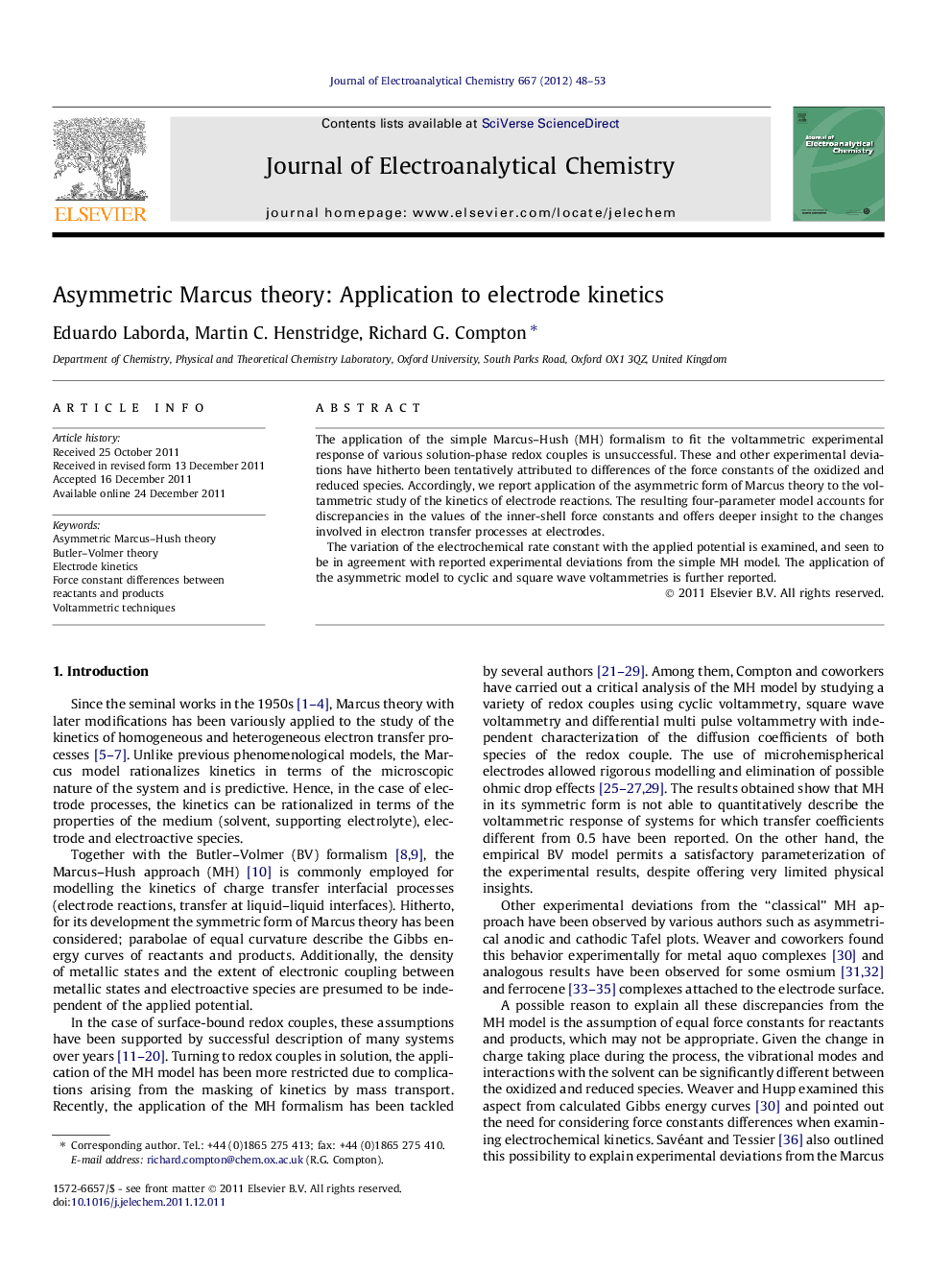| Article ID | Journal | Published Year | Pages | File Type |
|---|---|---|---|---|
| 219349 | Journal of Electroanalytical Chemistry | 2012 | 6 Pages |
The application of the simple Marcus–Hush (MH) formalism to fit the voltammetric experimental response of various solution-phase redox couples is unsuccessful. These and other experimental deviations have hitherto been tentatively attributed to differences of the force constants of the oxidized and reduced species. Accordingly, we report application of the asymmetric form of Marcus theory to the voltammetric study of the kinetics of electrode reactions. The resulting four-parameter model accounts for discrepancies in the values of the inner-shell force constants and offers deeper insight to the changes involved in electron transfer processes at electrodes.The variation of the electrochemical rate constant with the applied potential is examined, and seen to be in agreement with reported experimental deviations from the simple MH model. The application of the asymmetric model to cyclic and square wave voltammetries is further reported.
► The asymmetric form of Marcus theory is applied to the study of electrode kinetics. ► Force constant differences between oxidized and reduced species are considered. ► The new model can explain experimental deviations from the symmetric Marcus approach. ► Asymmetric model also offers additional insights to changes due to electron transfer. ► Cyclic and square wave voltammetries of diffusional redox couples are examined.
